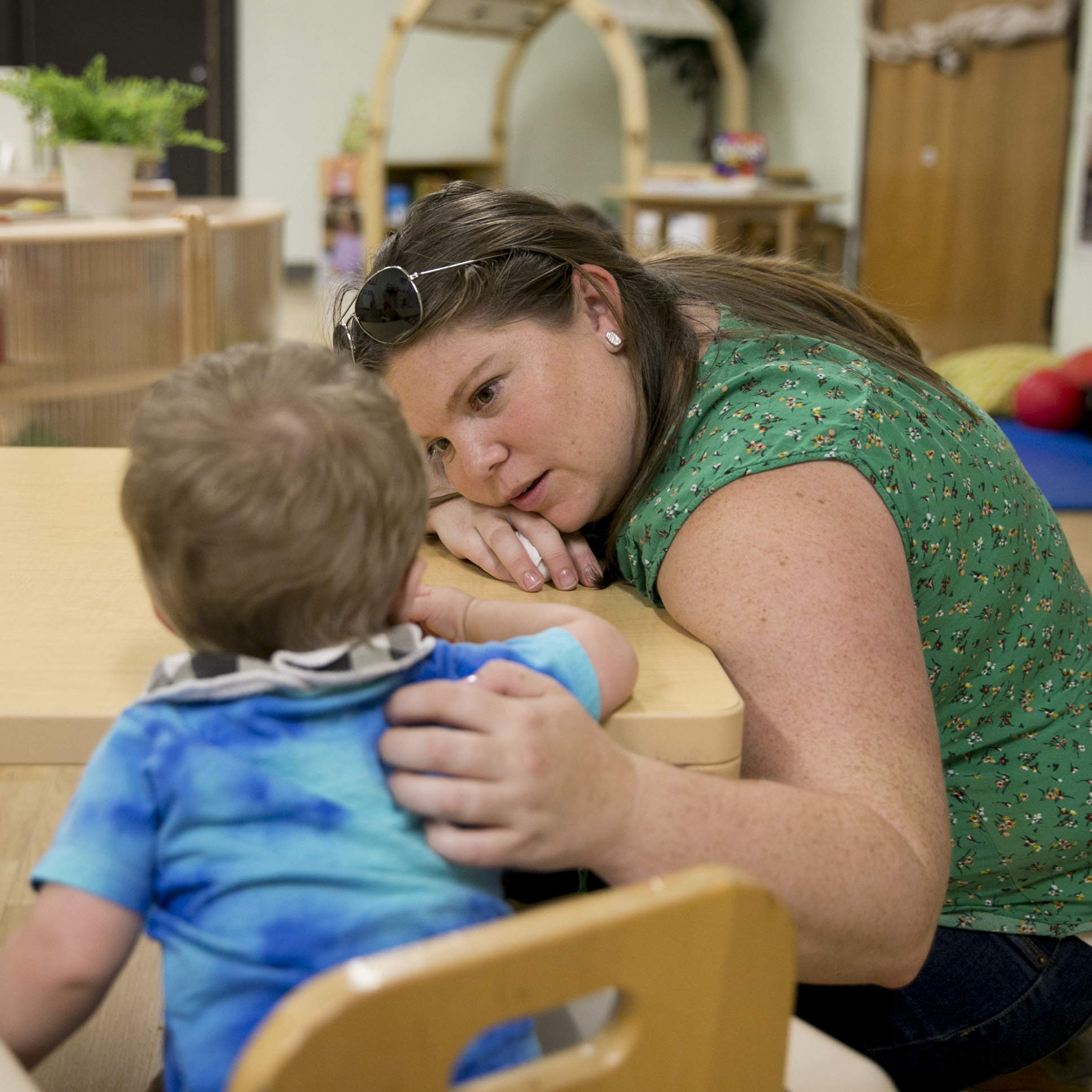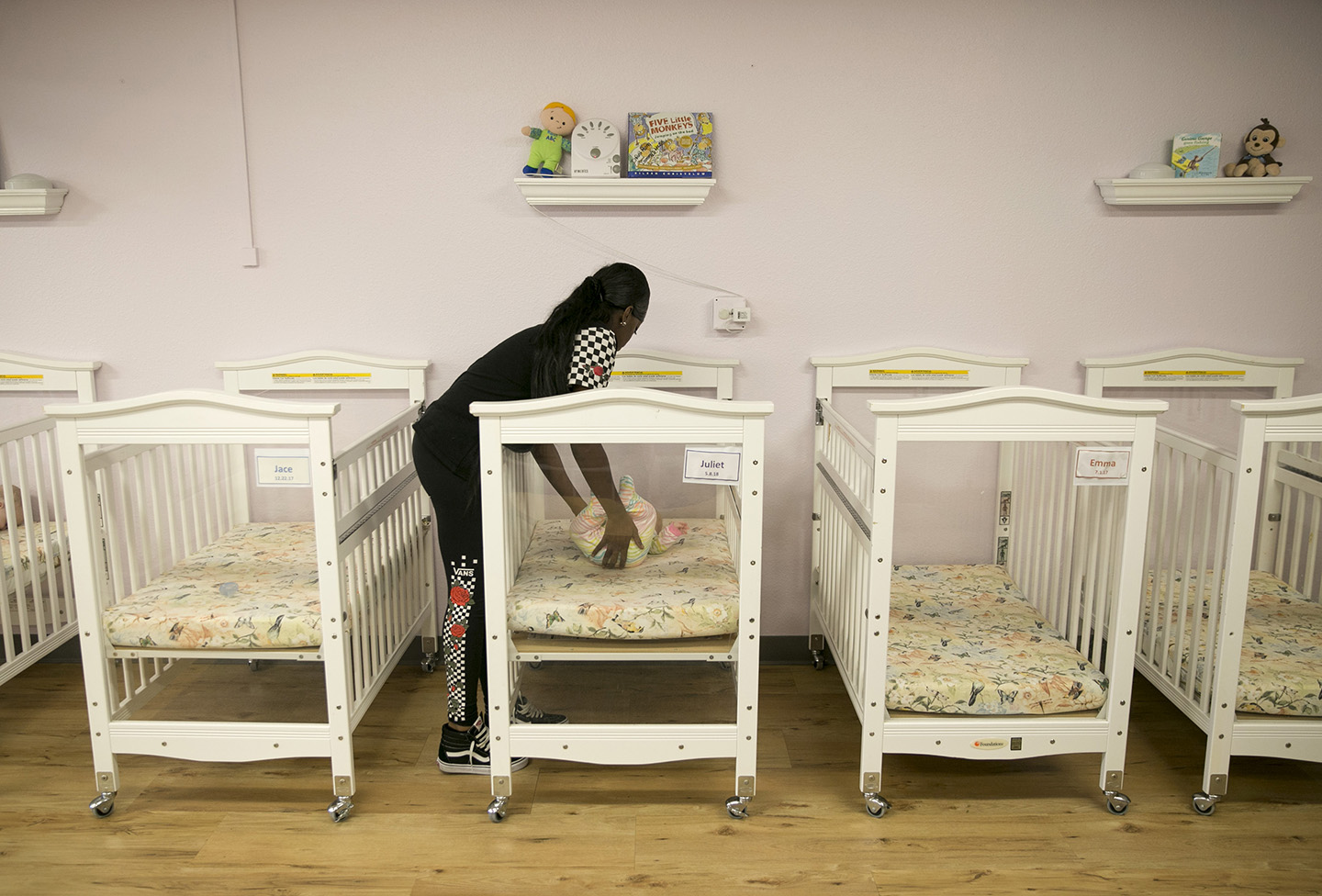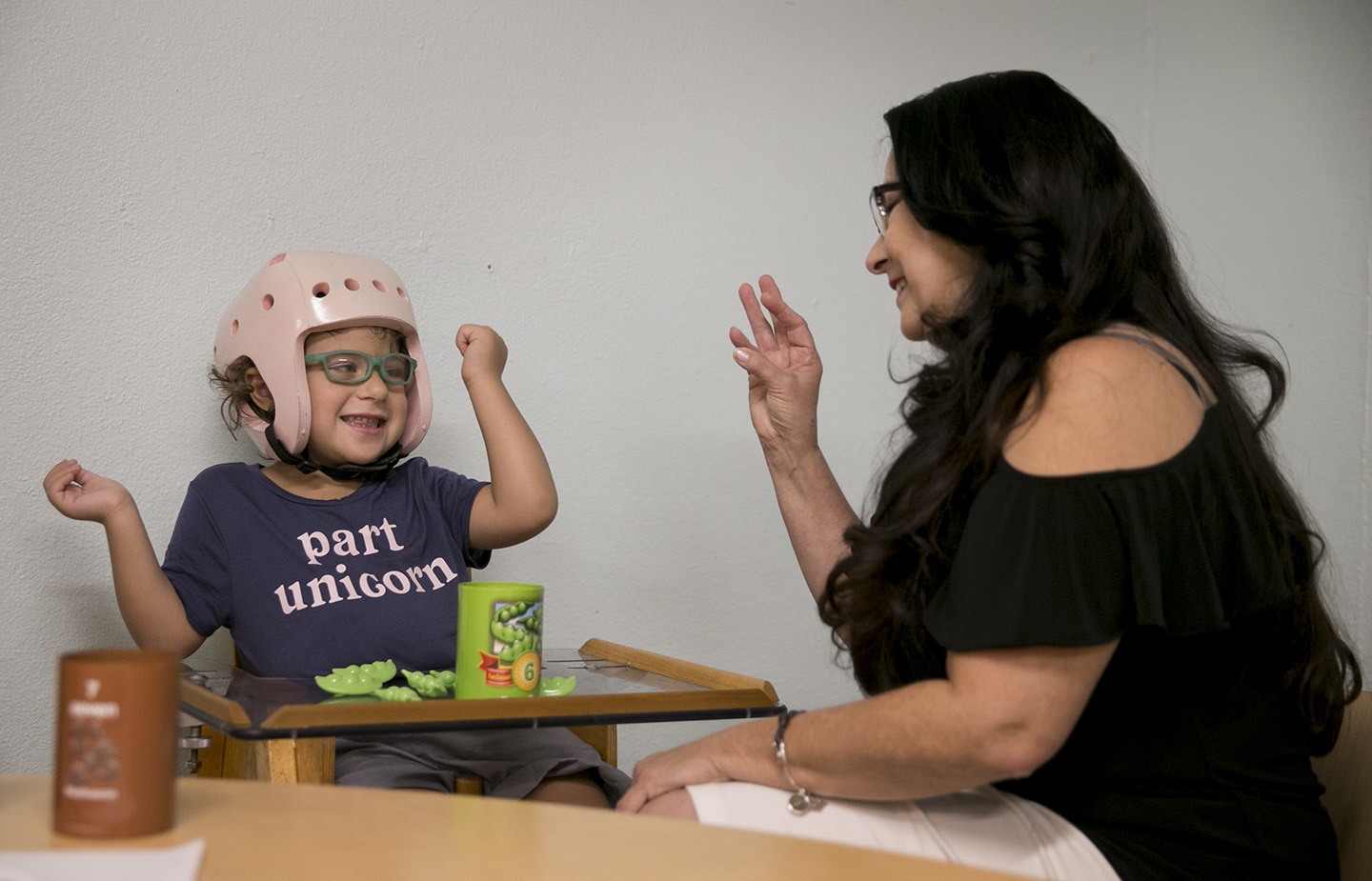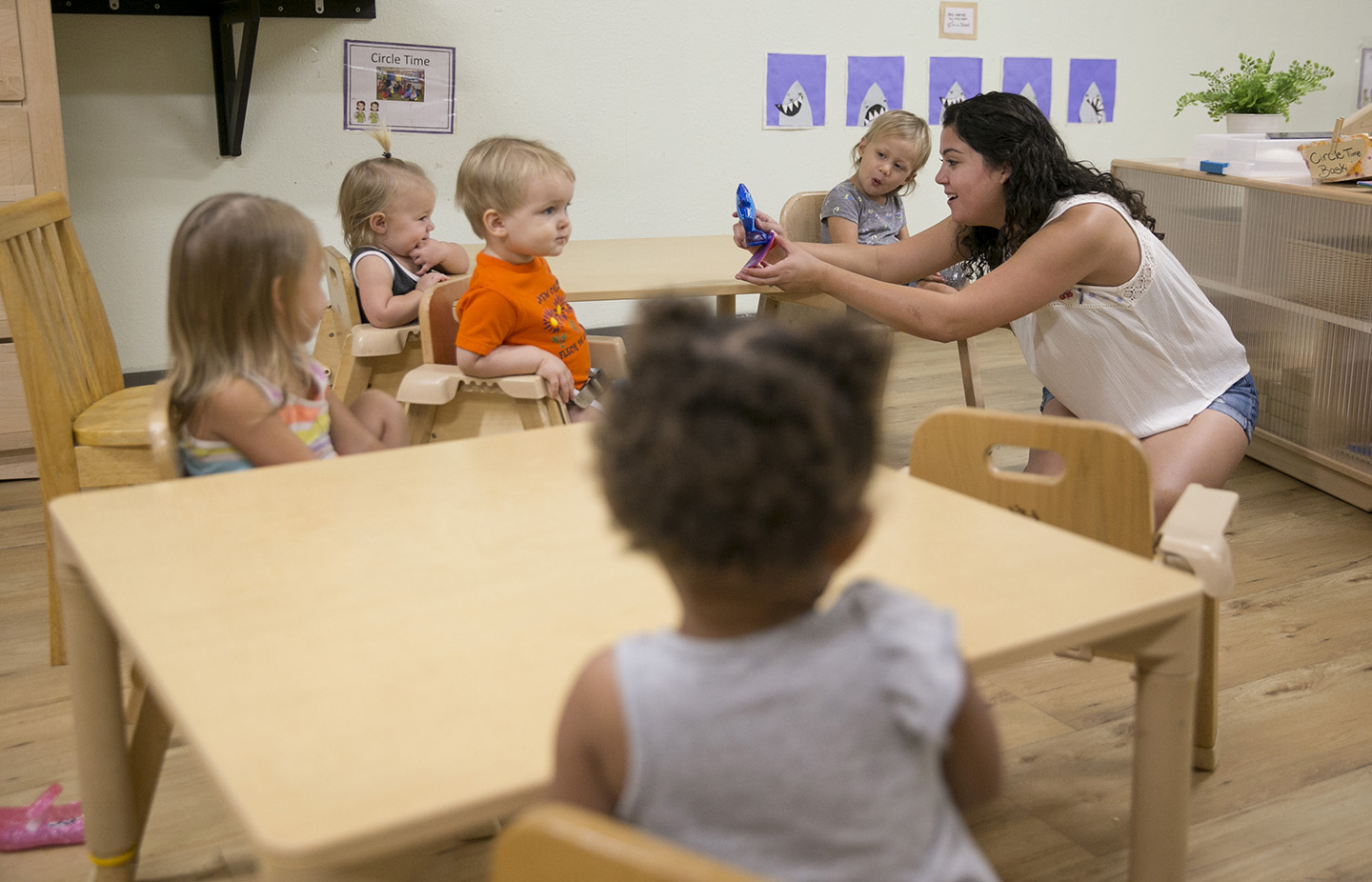Success
Some day cares make sure
their children are not
unwatched
How Sammy’s House runs
a quality day care — despite
the challenges

By Andrea Ball
Austin American-Statesman | Dec. 6 2018
Nineteen years ago, Isabel Huerta had a vision of a child care center that catered to children with disabilities.
Inspired by her son Sammy — who had Down syndrome, heart problems and a host of other medical conditions — Huerta knew that finding day care for kids with challenges was next to impossible. So she started her own. She called it Sammy’s House.
Although Sammy died six weeks before his namesake center opened, Huerta has been working for two decades to keep the nonprofit day care flourishing and affordable to parents, a Herculean task given that children with disabilities need more specialized caregivers and personalized attention to thrive.
Meanwhile, there are hundreds of state rules to follow, employees to recruit and retain, utilities and rent to pay in an expensive Austin real estate market and fear of losing the day care space to developers hungrily eying the property Sammy’s House leases off Burnet Road.
“I could never do this if I wasn’t a nonprofit,” Huerta said.
Every day, hundreds of thousands of Texas parents send their children to day care, fully expecting they will be kept from harm. But each year, children die of abuse and neglect and hundreds of others are seriously injured.
The findings are part of the American-Statesman’s yearlong investigation into these and other problems at Texas child care facilities. The newspaper read thousands of documents, researched dozens of day care safety records, analyzed existing data and built its own database to find patterns and trends.
What the Statesman found was that dangerous conditions exist inside many Texas day care facilities, leaving hundreds of children in need of medical care and nearly 90 children dead as a result of abuse or neglect since 2007. In this series, the newspaper explores problems such as day care sexual abuse, deaths, injuries, illegal operations and state oversight. The newspaper also presents potential solutions to some of those problems.
Hundreds of child care operations across the state have scores of violations for major problems with injuries, background checks or unsafe practices. But there are many organizations doing it right, said Beth Person, a day care licensing inspector for the Health and Human Services Commission.
“Child care gets a bad rap,” she said. “There are some good quality centers out there. You just need to do your homework.”
A large part of running a good child care operation is hiring the right people, which is not always easy.
According to the U.S. Bureau of Labor Statistics, a little more than 50,000 people in Texas were working in the child care industry in 2017, with an annual mean wage of $21,570. Nationally, there were 500,000 day care workers and their mean wage was $23,760, near poverty wages for a family of four.
In Austin, the website Indeed.com lists the average annual salary for child care workers at about $25,000.
It’s not easy to find good people willing to work for such meager salaries. Traci Mackintosh, former president of the Texas Licensed Child Care Association, said day care operators have to fight hard to get employees who might otherwise opt to work at restaurants or supermarkets.

“It is almost like a bidding war with salaries, and there are other (child care) centers in the area, too,” she said.
Because of that, some child care facilities see a lot of turnover, said David Brown, professor of early childhood education at Texas A&M University-Commerce. That can be very disruptive for children, especially very young ones, who are just learning to form attachments, he said.
“Why are workers leaving?” he said. “Most of the time they’re finding a higher paying job at Walmart or some other place.”
Huerta said she makes a concerted effort to ensure her employees feel appreciated. Bonuses, coffee runs, gift certificates and little presents are all part of making people feel valued, not only to thank them for their work, but to encourage them to stay.
“If we’re not going to fill their pocketbooks, we’ve got to fill their emotional pockets,” Huerta said.
The job is hard, and applicants don’t always know what they’re getting into, Mackintosh said.
“Once they get into a room with 16 2-year-olds, they are like ‘Oh, this isn’t what I thought it would be,’” Mackintosh said.
Experts say the early years are critical for a child’s emotional, physical and intellectual development. But making sure children are learning is just one piece of the puzzle. There are more than 1,100 “minimum standards” that dictate the way day care operations handle things such as employee training, background checks and building safety.

Huerta said that it takes a lot of time and effort to make sure Sammy’s House is complying with state regulations. Her staff frequently checks the state standards online, making sure the operation is up to date on the latest changes, she said.
Meanwhile, her employees are constantly checking for safety hazards, she said, making sure the gates are closed, the pool fence shut, the exits clear, the playground up to regulation and so on.
“I’ve got hundreds of checklists running daily,” Huerta said.
Sammy’s House has a stellar record with state investigators, usually coming through inspections with zero violations. That makes the center rare; the average day care facility has about nine violations at any given time.
Running a quality child care center is also about philosophy, Huerta said.
“Child care does not need to look like baby-sitting,” she said. “It needs to look like early education.”
But giving kids that kind of attention at an affordable rate for parents would not be possible without the hundreds of donors who support the child care center with money or in-kind services, Huerta said. Infant care starts at a little more than $1,000 a month; preschool care at $775. Without their donors, tuition could easily run $1,800 to $2,600 per month per child, she said.
Huerta is proud of the work her child care center is doing. But she says she could never do it by herself.
“It isn’t without an enormous amount of commitment from a lot of people,” she said.
